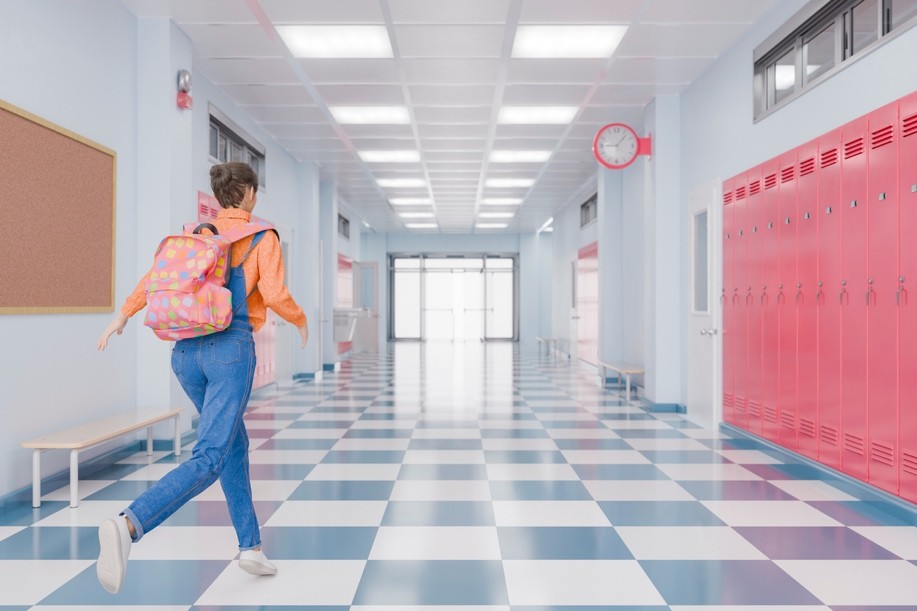On a bright morning in a small town, as children play and teachers prepare their lessons, school administrators face the solemn task of ensuring everyone’s safety—a fundamental responsibility in today’s K-12 education system. It’s a responsibility that weighs heavily on the shoulders of K -12 administrators, a silent contract made with every parent who entrusts their child to the school. In this context, the importance of school safety is not just a policy or a procedure; it’s the very foundation on which the future is built, one child at a time.
School Safety: It’s Complicated!
In recent years, the focus on school safety for K-12 institutions has become vital, reflecting the urgent need to protect students and staff from increasing incidents of violence and threats. The 2023 National Summit on K-12 School Safety and Security highlighted the need for a multifaceted approach to promote a secure educational environment.
This approach includes not only physical security measures but also stresses the importance of social media awareness, mental health support, cybersecurity, and community engagement in promoting a safe school culture. It underscores the complexity of maintaining a secure yet welcoming learning environment and the need for continued dialogue, resource allocation, and training in schools across the country.
Many school districts are now proactively upgrading their security systems through stand-alone projects, rather than waiting for the next renovation or implementing new security standards only as part of new facility construction. These districts are continually refining their security policies and improving their systems with the guidance of technology consultants who specialize in the latest safety and security trends for K-12 education environments.
Prioritizing Physical Security
For the last two decades, improving campus security has taken an increasing share of K-12 schools’ budgets, time, and priorities with many states requiring physical security assessments on an annual or multi-annual basis.
Most schools have implemented a range of measures to fortify their premises. Secured entryways ensure that access to buildings is controlled and monitored, while video surveillance acts as both a deterrent to potential threats and a means of logging any incidents that occur.
Emergency preparedness, including regular drills and clear communication protocols, equips the school community to respond effectively to crises, minimizing risk and trauma. Emergency response systems have also been upgraded to provide immediate alerts and enable swift communication with law enforcement and emergency services, ensuring a rapid and coordinated response to any situation.
These measures serve as the foundation on which a safe learning environment is built, deterring potential external threats and ensuring a sense of safety among students and staff.

Essential Tech Tools for Protecting Our Schools
The integration of technology plays an increasingly crucial role in enhancing school safety.
-
Access control systems can quickly activate to prevent unauthorized entry or limit access to specific areas. They can also provide valuable data for law enforcement and emergency responders in identifying potential risks and taking appropriate action. The use of video door phones to greet guests on campuses provides an additional layer of protection.
-
Visitor management systems are an effective tool for controlling access and identifying potential threats. By tracking visitors and their activities within the school, schools can better manage and respond to security risks.
-
Door Monitoring systems can be instrumental in tracking access into and out of school buildings. This system also allows faculty and security personnel to be notified of door locations that are left open for extended periods so corrective actions can be taken.
-
Automated lock-down and mass notification systems are increasingly common in K-12 schools. These systems can quickly and effectively alert and inform students, teachers, and staff about emergencies and provide guidance on how to respond.
-
Video intercoms are commonly used with a special entryway called an “interlock” which prevents both doors in the hallway from being open simultaneously. They can be used at campus entry points to screen visitors before they enter and can also provide a digital record of all interactions.
-
Video surveillance can monitor campus activity, identify potential threats, and aid emergency response.
While these technologies provide a robust framework for controlling entry, monitoring campus activity, and swiftly responding to emergencies, the implementation of these surveillance technologies in schools has sparked discussions about privacy concerns, trust, and potential abuse of authority.
Balancing the need for security with respecting student privacy involves clear policies, transparency with students and parents, and making sure that surveillance measures are used responsibly and in areas where privacy expectations are minimal. This balance is critical in maintaining trust within the school community while safeguarding its members and creating and retaining an inclusive and welcoming learning environment for all.

Emotional and Psychological Safety
The discourse on school safety now embraces a comprehensive perspective that underscores the significance of mental health and cybersecurity in addition to physical security measures. Central to this approach are Trauma-informed Multi-Tiered Systems of Support (T-MTSS) and the presence of mental health professionals, who play key roles in addressing diverse mental health needs among students and fostering a nurturing environment conducive to learning.
In a trauma-sensitive school setting, every aspect of the educational system—from staff training to interactions with students and families to institutional procedures and policies—is informed by an understanding of trauma and its effects, aimed at bolstering resilience for all.
This framework encompasses practices spanning six domains: (1) supporting staff development; (2) fostering a safe and supportive environment; (3) assessing needs and delivering support; (4) cultivating social and emotional skills; (5) collaborating with students and families; and (6) adapting policies and procedures (Guarino & Chagnon, 2018).
Districts in Ohio have been particularly proactive on issues of school emotional safety. Across the state the second week of School Safety Month highlighted the significance of emotional safety, recognizing it as a pivotal element of overall school safety. Ohio School Safety Month endeavors to enhance awareness and engage the public in upholding secure learning environments, with the Ohio Department of Education and partner agencies offering resources. Notably, Emotional Safety Week, observed from Oct. 9-15, coincides with National Stop Bullying Day on Oct. 12, underscoring the particular emphasis on emotional safety during this period.
Cybersecurity Measures to Protect Student Data
The summit discussions also highlighted the crucial role of cybersecurity in protecting student data and privacy online. Emphasizing the need for digital literacy and safety education among students, these conversations focused on creating awareness about online threats and teaching safe internet practices. Robust systems to safeguard against data breaches and cyber threats are essential in ensuring a secure digital environment for both students and staff, allowing for the safe use of technology in educational settings.
Fostering a Positive School Climate Through Community Engagement
Engaging parents and students in school safety efforts is paramount for creating a secure environment. Open dialogues and inclusive safety planning sessions encourage community members to share their perspectives and contribute to the development of complete safety measures, making sure that everyone’s voice is heard and valued in the quest for a safer school.
Proactive measures, including regular safety audits and stakeholder training, are crucial. A culture of openness where students, staff, and parents feel comfortable reporting safety concerns, and collaboration with local law enforcement, mental health professionals, and other community resources strengthens the school’s safety network, creating a comprehensive approach to risk management.
Grant Funding and Resource Allocation
Schools are encouraged to stay abreast of the latest safety protocols and technological innovations to make sure their safety measures evolve in tandem with emerging threats and advancements in security solutions. Continuous investment in the latest safety protocols and technologies is crucial to adapting to evolving security challenges.
Grant funding and resource allocation are key elements in staying current and improving school safety. By using these financial resources, schools can access advanced security technologies and comprehensive training programs, and implement best practices in safety and emergency response.
The Ripple Effects of a Safe Learning Environment
The benefits of a safe learning environment extend far beyond the school gates. Students who feel safe are more likely to engage in the learning process, demonstrate higher academic achievements, and develop into concerned, responsible citizens. A culture of safety also attracts and retains quality educators, further enhancing the educational experience.
The Role of Leadership in Fostering Safety
Leadership is at the heart of effective school safety programs. Administrators must be visionary, proactive, and collaborative, working tirelessly to foster an environment where safety protocols are seamlessly integrated into the educational fabric. Visionary leaders also stay abreast of emerging safety technologies and best practices, ensuring their schools evolve with the changing landscape of educational safety.
In the landscape of education, the significance of a secure learning environment cannot be overstated. For K-12 administrators, the commitment to school safety transcends mere regulatory compliance—it is a cornerstone for developing academic achievement, emotional well-being, and societal growth. As guardians of education’s future, administrators play a pivotal role in shaping environments where safety and learning go hand in hand, ensuring that schools remain safe places of discovery, inclusivity, and resilience.
This article is based, in part, on the following articles:
- gov
- National Institute of Justice
- The Cybersecurity and Infrastructure Security Agency (CISA)









